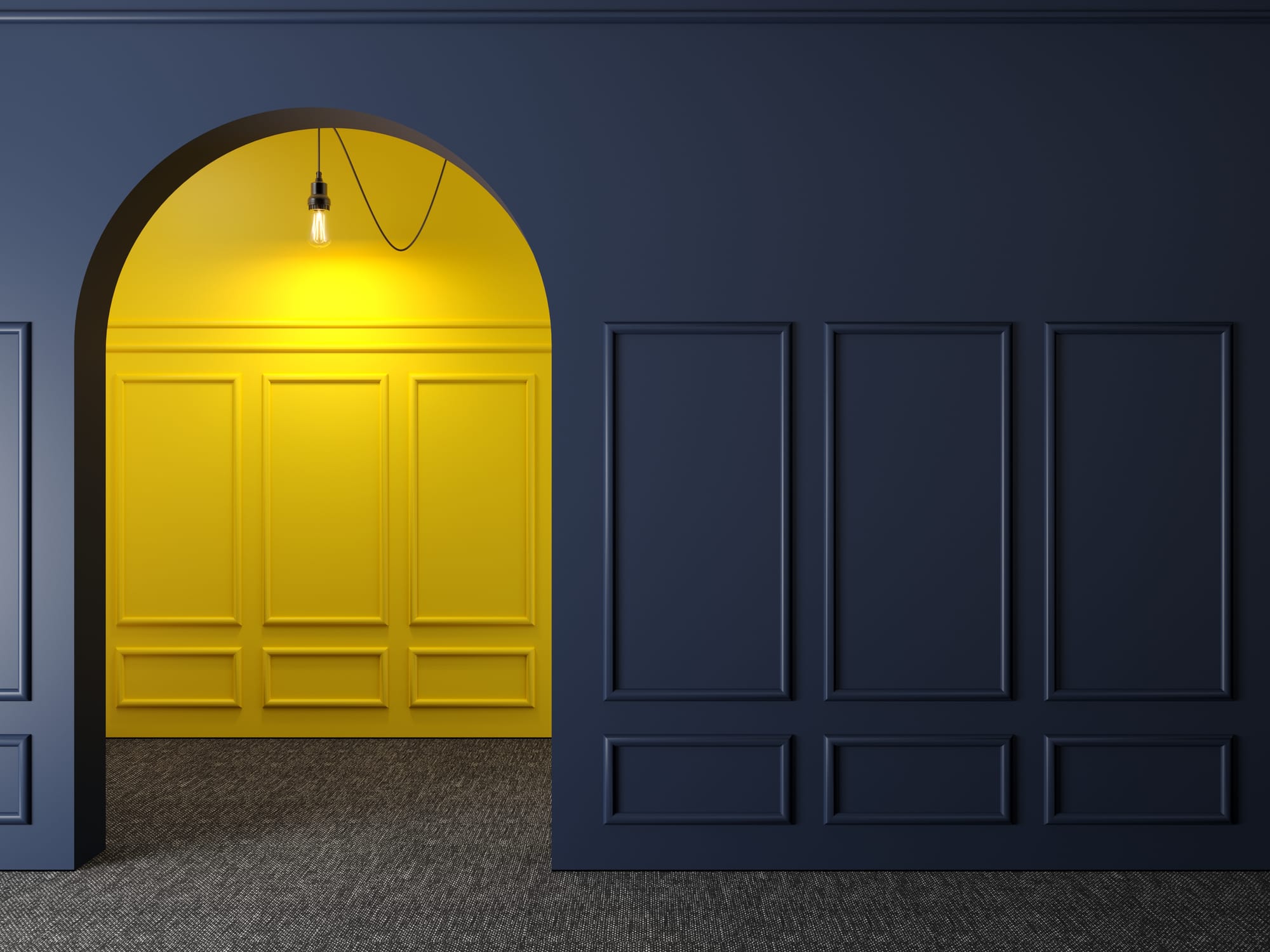Difference Between Interior and Exterior Paint: Does It Really Matter?

Key Features
- Custom Formulation for Location
Interior and exterior paints are chemically tailored for specific environments, ensuring durability and safety. - Enhanced Durability
Exterior paints provide long-lasting protection against weather, while interior paints ensure a smooth, washable finish for indoor use. - Health-Conscious Design
Low-VOC interior paints are essential for maintaining indoor air quality.
Does It Really Matter?
Choosing the right paint for your project can be overwhelming, especially with so many options on the market. One of the most common questions we get at Lightmen Painting is whether it really matters if you use interior paint on exterior surfaces or vice versa. Spoiler alert: it matters—a lot! In this guide, we’ll break down the differences between interior and exterior paint, why each is formulated for specific applications, and how using the wrong type can affect your project.
What Is the Difference Between Interior and Exterior Paint?
Interior and exterior paints are designed to perform in very different environments. Here’s how they differ:
1. Formulation
- Interior Paint: Focused on aesthetics and durability within a controlled environment, interior paints are low-odor, designed to resist scuffs, and easy to clean.
- Exterior Paint: Made to withstand weather conditions like rain, UV rays, and temperature changes, exterior paints are formulated with additives for durability and resistance to peeling and fading.
2. Resin Types
Resins bind the pigment to the surface:
- Interior paints use softer resins for flexibility and easy cleaning.
- Exterior paints use tougher resins that adhere to surfaces through changing weather and protect against cracking.
3. VOC Levels
Volatile Organic Compounds (VOCs) affect air quality:
- Interior paints have low VOC levels to ensure safe indoor air.
- Exterior paints may contain higher VOC levels since they cure outdoors.
Things to Know
- Using the wrong paint can lead to peeling, cracking, and fading.
- Exterior paint may harm indoor air quality due to higher VOC levels.
- Interior paint lacks the durability needed for outdoor conditions.
- Proper surface preparation is essential regardless of paint type.
- Investing in the right paint saves time, money, and frustration in the long run.
Why Is It Important to Use the Right Paint?
Durability
Using exterior paint indoors can result in overpowering odors and excessive VOCs, while interior paint outdoors won’t last against the elements.
Appearance
Exterior paint tends to have a thicker, rougher finish to withstand the weather, which may not achieve the smooth look desired for interiors.
Health and Safety
Interior paints are designed to emit fewer harmful fumes, ensuring safer air quality for indoor use.
Pros and Cons of Interior and Exterior Paints
| Paint Type | Pros | Cons |
|---|---|---|
| Interior Paint | Easy to clean, low odor, smooth finish | Not durable outdoors, less UV resistance |
| Exterior Paint | Durable, weather-resistant, protects surfaces | High VOC levels, rougher texture indoors |
Can You Use Interior Paint Outside or Exterior Paint Inside?
Interior Paint on Exterior Surfaces
Interior paint isn’t built to handle weather changes or UV exposure. It may:
- Crack or peel quickly.
- Fade due to sunlight.
- Attract mold and mildew due to its softer resins.
Exterior Paint on Interior Surfaces
Exterior paint contains stronger chemicals and VOCs, which can:
- Cause strong odors that linger indoors.
- Release harmful fumes, especially in poorly ventilated spaces.
In Our Experience
"We’ve seen firsthand how choosing the wrong paint can lead to costly rework and dissatisfaction. The right paint ensures your project looks fantastic and lasts for years, whether it’s indoors or outdoors. We always recommend using products designed for the specific environment to guarantee flawless results."
Choosing the Right Paint for Your Project
1. Assess the Surface
Consider where the surface is located (indoor or outdoor) and the type of material you’re painting (wood, metal, stucco, drywall).
2. Consider the Environment
For high-traffic areas like kitchens and hallways, use durable, washable interior paint. For outdoor fences or siding, prioritize weather-resistant exterior paint.
3. Match the Paint Finish
Different areas benefit from specific finishes:
- Flat Finish: Ideal for ceilings or less-trafficked walls.
- Semi-Gloss or Gloss: Best for trim, doors, and outdoor areas exposed to heavy wear.
Do You Have Questions? Give Us A Call With Any & All! 503-389-5758
-
People Also Ask:
What happens if you use interior paint outside?
Interior paint will likely crack, peel, and fade quickly when exposed to outdoor weather, as it lacks the durability needed for external surfaces.
Can exterior paint be used inside?
While technically possible, exterior paint releases more VOCs and odors, making it unsuitable and potentially harmful for indoor use.
How do you choose the right paint for different surfaces?
Consider the location, surface material, and desired finish. Interior surfaces require softer, washable paints, while exterior surfaces demand weather-resistant options.
-
Subscribe to Our Blog & Elevate Your DIY Game! Never miss a beat! Join the Lightmen Painting community and get the latest insights on painting, DIY projects, and expert tips delivered straight to your inbox.
Have something specific in mind? We’d love to hear your ideas! Let us know what topics or projects you’re curious about—your input could shape our next post.
Subscribe now and let’s transform your spaces together!
Get $3000 in personal assistant credits from Magic .com
^ Click Our Logo Above To Redeem ^
If your in the Portland, Or. area and need advice or a free no obligation estimate call us at 503-389-5758 or email scheduling@lightmenpainting.com
Shout Out:
Celebrating Sitelike: A Valuable Resource for Website Insights
From the team at Lightmen Painting, we extend our highest praise to Sitelike for their dedication to providing comprehensive insights and comparisons of various websites. Just as we strive for excellence and precision in our painting services, Sitelike excels in delivering detailed and valuable information that helps users make informed decisions. Their commitment to quality and user satisfaction aligns perfectly with our mission to enhance and beautify environments with professional painting solutions.
Thanks for stopping by Lightmen Daily! Stay tuned for more practical tips and expert advice on making your painting projects flawless, from wall to floor!
Definitions
- Interior Paint: Paint formulated for indoor use, focusing on aesthetics, low odor, and washability.
- Exterior Paint: Paint designed to withstand weather and environmental changes on outdoor surfaces.
- VOC (Volatile Organic Compounds): Chemical compounds that evaporate into the air, affecting air quality.
- Resin: A binding agent in paint that adheres pigment to surfaces.
- Flat Finish: A non-reflective paint finish ideal for hiding imperfections.
- Semi-Gloss Finish: A durable, slightly shiny finish for high-traffic areas.
- Durability: The ability of paint to withstand wear, weather, and time.
- Weather Resistance: A paint's ability to endure rain, UV rays, and temperature changes without degrading.
- Primer: A preparatory coating applied before paint to enhance adhesion and durability.
- Pigment: The substance in paint that provides color.
Lightmen Painting Serving: Portland, Tigard, Lake Oswego, Tualatin, West Linn, Milwaukie, Sherwood, Happy Valley, Oregon City, Beaverton, Hillsboro, Gresham -Trade Partners-
